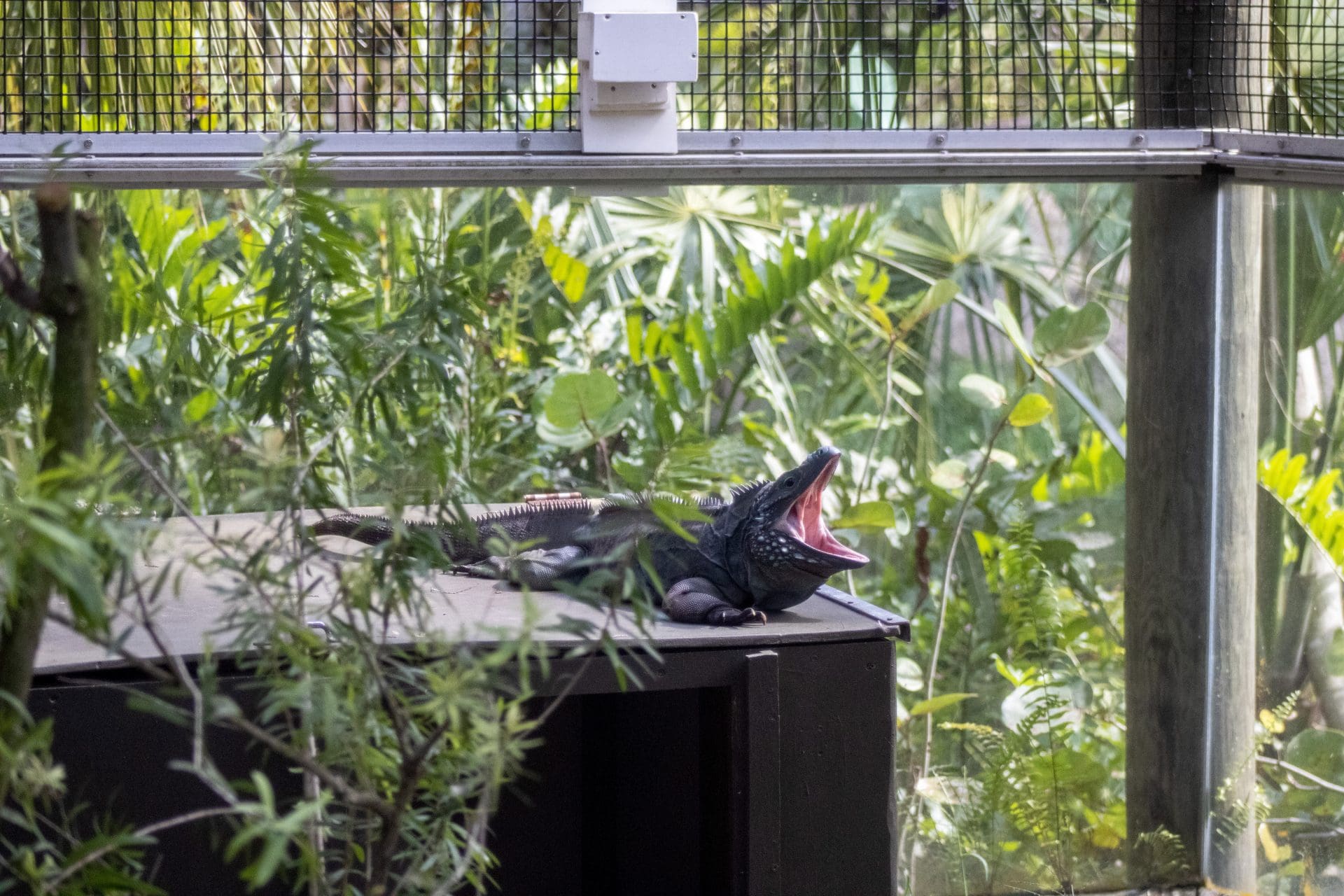Summary of Pairing Up Our Grand Cayman Blue Iguanas:
The Brevard Zoo has successfully introduced two Grand Cayman blue iguanas, Leonard and Lucia, as part of a conservation breeding program. The species is endangered, and the zoo works with the Species Survival Plan (SSP) to ensure their population grows and thrives. The introduction process was done in phases, starting with visual contact and progressing to full-contact introductions. The zoo closely monitors the behavior of the iguanas and intervenes if necessary. This is Lucia’s first reproductive season, and the zoo hopes she will lay eggs. If she does, the eggs will be incubated by the zoo’s Herps & Aquatics team. The hatchlings will then be provided with appropriate habitats to grow. The zoo will provide updates on Leonard and Lucia’s progress in the future.
Summary:
1. The endangered status of the Grand Cayman blue iguana and the importance of breeding programs.
2. The careful process of introducing a male and female iguana for breeding.
3. The behaviors and interactions during the breeding process.
4. The possibility of eggs being laid and the incubation process.
5. The plans for monitoring and updating Leonard and Lucia’s progress.
Pairing Up Our Grand Cayman Blue Iguanas
In the conservation world, every birth, every successful pairing, and every thriving population is a cause for celebration. This is particularly true for the Grand Cayman blue iguana, a species that has faced the brink of extinction. Today, we are thrilled to announce the successful pairing of Leonard, our male blue iguana, and Lucia, our female counterpart. Let us dive deeper into the unique and fascinating aspects of this pairing and the effort it takes to ensure the survival of this magnificent species.
The Grand Cayman blue iguana holds a special place in zoos and conservation. Once critically endangered, with fewer than 30 individuals in the wild, these iguanas are now classified as endangered, thanks to conservation breeding programs. These programs, including the Association of Zoos and Aquariums (AZA) Species Survival Plan (SSP), are vital in tracking the population’s genetics and making breeding recommendations across participating zoos. Through these coordinated efforts, the species population has the best opportunity of growing and thriving.
Meet Lucia, our female Grand Cayman blue iguana. At 5 years old, Lucia has reached the maturity required for breeding. The SSP recommended pairing her with 10-year-old Leonard, and our team has patiently waited for this momentous occasion. Introducing animals, especially territorial ones like blue iguanas, is no simple task. For most of the year, mature adults would unlikely spend time near each other. However, during the breeding season in late spring or early summer, males and females become more receptive to each other and seek out brief breeding encounters.
Our animal care team followed a carefully planned process to introduce Leonard and Lucia. The first phase involved moving Lucia to the habitat next to Leonard’s. With a clear wall separating them, they could see each other and become familiar with one another’s presence. Then came the “howdy” phase, where Leonard was brought into Lucia’s space in a secure carrier. This allowed them to see and smell each other without physical contact. Throughout these phases, the team diligently monitored their behavior, keeping detailed notes and assessing their level of interest in each other.
Finally, the full-contact introductions took place. The entire Herps & Aquatics team was present, ensuring the safety and well-being of both iguanas. Leonard and Lucia were observed closely, and the habitat was designed to provide visual barriers and hiding spots to allow for natural responses to breeding interest or disinterest. The male’s behavior during copulation, though seemingly rough, is a natural part of iguana breeding. With their remarkable scales and extra loose skin, these iguanas can maneuver and tolerate certain levels of restraint. However, intervention would be necessary if any behavior becomes overly aggressive, stressful or results in serious injury.
While we are excited about the progression of Leonard and Lucia’s relationship, it is essential to manage our expectations. This is Lucia’s first reproductive season, and copulation has yet to occur. We have provided her nesting material options and locations, but she may reabsorb the egg follicles rather than develop and lay eggs. Either outcome is possible, and we continue to offer the appropriate space and closely monitor her behavior. If she does lay eggs, the Herps & Aquatics team will incubate them to ensure optimal conditions for their development and better chances of hatching.
It is worth noting that female iguanas do not provide any parental care to hatchlings. Therefore, if any eggs are successfully hatched, the hatchlings will be provided appropriate habitats to grow independently, just as they would in their native range. This natural process allows the young iguanas to develop and thrive on their own, contributing to the sustainability of the species.
As this breeding season ends, we want to express our gratitude for your support and share our commitment to keeping you updated on Leonard and Lucia’s journey. They can be spotted in our Caribbean Trail before our Rainforest Revealed loop. Their presence serves as a reminder of the resilience of nature and the power of conservation efforts.
Remember, your generous support allows us to continue serving our community and carrying out vital animal wellness, education, and conservation programs. Together, we can significantly impact the survival of endangered species like the Grand Cayman blue iguana.


